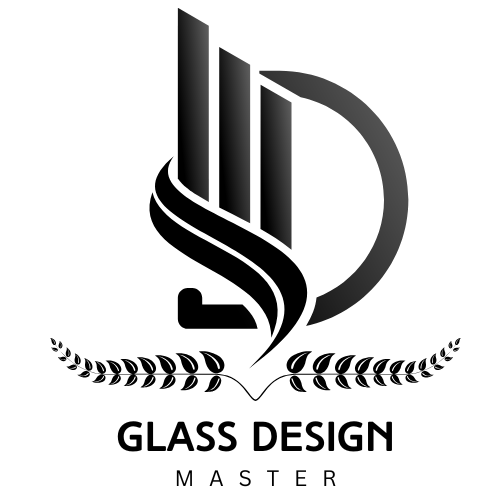In the ever-evolving world of design, materials that seamlessly blend functionality with aesthetics are highly sought after. One such material making a significant impact is thick glass. Once primarily valued for its structural integrity, thick glass has now emerged as a centerpiece in modern architecture and interior design, offering both durability and a touch of elegance.

Types of Thick Glass Design
Understanding the different types of thick glass can help you choose the best option for your space. Here are the most popular ones:
1. Tempered Glass

- Also known as toughened glass, tempered glass undergoes a heat treatment process to enhance its strength.
- If broken, it shatters into small, harmless pieces, making it a safer option for high-traffic areas.
- Commonly used in doors, partitions, and glass railings.
2. Laminated Glass

- Composed of two or more layers of glass bonded with a plastic interlayer.
- Offers enhanced safety as the glass remains intact even when shattered.
- Often used in skylights, car windshields, and soundproof windows.
3. Bulletproof Glass

- A reinforced laminated glass with multiple layers, making it highly resistant to impact.
- Used in banks, security booths, and luxury homes.
4. Insulated Glass

- Consists of two or more glass panes separated by a vacuum or gas-filled space.
- Provides excellent thermal insulation, reducing energy costs.
- Commonly found in modern energy-efficient buildings.
5. Frosted or Tinted Thick Glass

- Features a textured or tinted surface for privacy while still allowing light to pass through.
- Ideal for bathrooms, office partitions, and decorative applications.
Benefits of Thick Glass Design
- Enhanced Durability and Safety: Thick glass stands out for its robustness, making it less susceptible to breakage compared to its thinner counterparts. This resilience ensures longevity and provides an added layer of safety, especially in high-traffic areas or homes with children and pets.
- Superior Insulation Properties: Beyond its strength, thick glass offers excellent insulation. Its density aids in maintaining indoor temperatures, leading to improved energy efficiency. This characteristic is particularly beneficial in regions experiencing extreme weather conditions, as it helps keep interiors comfortable year-round.
- Acoustic Benefits: For those seeking tranquility, thick glass serves as an effective sound barrier. Its mass reduces the transmission of external noises, creating serene indoor environments a feature especially appreciated in bustling urban settings.
Applications of Thick Glass Design
- Glass Blocks Making a Comeback: Once a hallmark of 1980s design, glass blocks are experiencing a renaissance in contemporary architecture. Modern interpretations utilize thick glass blocks to diffuse light while ensuring privacy, blending nostalgia with modern elegance. Architects and designers are incorporating them into various spaces, from bathrooms to feature walls, to add texture and visual interest.
- Large-Format Glass Panels: The trend of expansive glass installations continues to grow. Thick, large-format glass panels are being used to create seamless transitions between indoor and outdoor spaces, enhancing natural light and offering unobstructed views. This approach not only elevates the aesthetic appeal but also fosters a deeper connection with the surrounding environment.
- Curved and Custom-Shaped Glass: Moving away from traditional flat surfaces, designers are embracing curved and uniquely shaped thick glass elements. These custom pieces serve as striking focal points in interiors, adding a dynamic and fluid aesthetic that challenges conventional design norms.
Incorporating Thick Glass into Your Space

Integrating thick glass into your home or office can transform the ambiance and functionality of the space. Consider the following applications:
- Partition Walls: Utilize thick glass to create partitions that delineate spaces without sacrificing openness or light flow. This approach maintains an airy feel while providing necessary separation.
- Staircase Railings: Replace traditional materials with thick glass railings for a sleek, modern look that enhances the sense of space and allows for unobstructed views.
- Tabletops and Countertops: Opt for thick glass surfaces to add a touch of sophistication and durability to dining areas or workspaces. Their reflective quality can also contribute to a brighter environment.
Frequently Asked Questions (FAQs)
1. Is thick glass more expensive than regular glass?
Yes, thick glass is generally more expensive due to its durability, strength, and additional processing like tempering or lamination. However, its long-term benefits, such as safety and insulation, make it a worthwhile investment.
2. Can thick glass be customized for unique shapes and designs?
Absolutely! Thick glass can be cut, shaped, and even curved to fit specific design needs, making it a versatile option for both functional and decorative applications.
3. Is thick glass suitable for outdoor applications?
Yes, thick glass is commonly used in outdoor applications such as balcony railings, facades, and glass canopies due to its resistance to weather conditions and high durability.
4. How do I maintain thick glass surfaces?
Cleaning thick glass is easy use a mild glass cleaner and a soft cloth to wipe off dust, smudges, and fingerprints. For outdoor installations, periodic professional cleaning may be required.
Conclusion
Thick glass design masterfully combines strength with style, offering a versatile solution for various architectural and interior applications. Its resurgence in modern design underscores a growing appreciation for materials that provide both aesthetic appeal and functional benefits. Whether through the revival of glass blocks, the use of expansive panels, or innovative custom shapes, thick glass continues to shape contemporary spaces in exciting ways. Consider exploring these trends to infuse your environment with the timeless elegance and resilience that thick glass brings.

